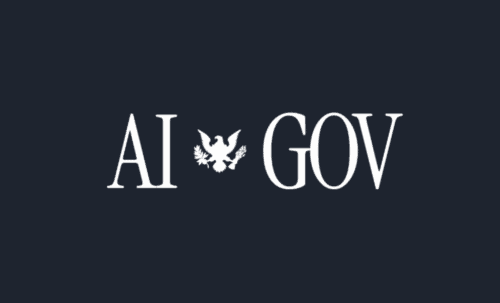Welcome to your gateway to understanding the diverse landscape of the labor market. Whether you’re entering the job market for the first time or seeking insights on the latest employment trends, this guide unveils critical aspects that every entry-level job seeker should know.
In this guide, we will explore labor market dynamics, dissecting its trends, opportunities, challenges, and the legal and economic influences that shape it. You’ll gain valuable knowledge on how technological advancements and economic changes reshape workspaces and how to adapt to these shifts.
Moreover, this guide emphasizes the importance of DEI in creating a vibrant labor market and ensuring that all candidates, regardless of their background, have the opportunity to thrive.
Understanding the Labor Market
The labor market, often a reflection of the economic environment, comprises individuals seeking employment and employers looking for workers. This dynamic market is influenced by various factors ranging from economic conditions to technological advancements.
Key Components of the Labor Market
Several elements play critical roles in shaping the labor market:
Supply and Demand: These are the fundamental forces of the labor market, where employers’ needs for skills meet the availability of those skills in the workforce.
Wages and Benefits: These incentives attract workers to specific jobs and industries.
Economic Policies: Government policies can either stimulate or restrain job growth and availability.
Influences on the Labor Market
The labor market is under constant transformation due to several external influences:
Technological Change: This can create new job opportunities while making others obsolete.
Globalization: Increased global connectivity has led to a more competitive international labor market.
Demographic Shifts: Changes in the age, ethnicity, and gender makeup of the population can significantly affect labor market dynamics.
Understanding these components and influences helps stakeholders make informed decisions. Also, the U.S. Bureau of Labor Statistics provides a wealth of data pertinent to job market trends, which can be accessed here.
Current Trends in the Labor Market
As we examine the labor market’s framework more closely, it’s crucial to identify the prevailing trends shaping its future. These trends affect how organizations operate and influence how job seekers approach their ideal job goals.
Emerging Job Sectors
In recent years, there has been a significant shift in the sectors that are experiencing growth. Notable areas include:
Healthcare: Driven by an aging population and greater health consciousness.
Technology: Expansion in artificial intelligence, cybersecurity, and big data fields.
Renewable Energy: Increased focus on sustainability spurs jobs in solar, wind, and other renewable sectors.
Knowledge of these sectors can guide career choices and investment in skills development.
Remote Work and Flexibility
The adoption of remote work has accelerated, becoming a key trend:
Workplace Flexibility: More companies offer flexible working conditions as a standard practice.
Geographical Decentralization: Employees are no longer bound by locations, opening up national and global opportunities.
The Gig Economy’s Rise
Another notable trend is the expansion of the gig economy:
Freelance Work: Platforms like Upwork and Freelancer facilitate gig and freelance opportunities.
Short-term Contracts: Many professionals are moving towards project-based or short-term contractual work.
This shift offers flexibility but also presents challenges regarding job security and benefits. These trends are crucial for understanding where the labor market is headed and how to prepare for the future.
Challenges Facing the Labor Market
The evolution of the labor market brings opportunities and significant challenges that need to be addressed to ensure a robust economic future.
Skills Gap and Education
Adjusting to the ever-changing demands of the labor market is critical. Key issues include:
Skills Mismatch: Many workers find their skills outdated as job requirements evolve.
Education Alignment: There’s a crucial need for educational systems to keep pace with market needs.
Workplace Inequality
Despite progress, persistent issues remain:
Gender Pay Gap: Women and diverse groups often face wage disparities.
Underemployment: Highly skilled workers in jobs that don’t use their capabilities is another concern.
These factors can demotivate and reduce workforce efficiency.
Opportunities Within the Labor Market
The ongoing disruptions in the labor market also present numerous opportunities for growth and innovation, affecting both employers and employees.
Increased Focus on Soft Skills
The importance of soft skills is becoming more recognized:
Leadership and Communication: These skills are in high demand across all sectors.
Adaptability and Problem-Solving: Valuable in navigating workplace challenges.
These skills enhance career longevity and effectiveness.
Entrepreneurship and Innovation
The current market conditions are ripe for entrepreneurial endeavors:
Startup Culture: Encourages innovative approaches to traditional business problems.
Support for SMEs: Many resources are available to support small and medium enterprises. This can drive personal and economic growth.
These opportunities not only navigate the challenges but also exploit the potential for significant professional and business advances. Learn more about small business resources at the U.S. Small Business Administration.
The Role of Government in the Labor Market
The government plays a pivotal role in shaping the labor market through regulations, policies, and support programs.
Regulatory Frameworks
Structured regulations help maintain a balanced and fair labor market:
Labor Laws: These ensure worker rights are protected against exploitation.
Safety Standards: Safety regulations safeguard the health and well-being of employees.
Economic Stimulus Measures
In times of economic downturns, government intervention is crucial:
Job Creation Programs: Aims to reduce unemployment through public and private cooperation.
Financial Incentives: Subsidies and tax reliefs encourage businesses to hire and retain staff.
Support for Training and Education
Educational initiatives align workforce skills with industry needs:
Grants and Scholarships: Financial support for students in key sectors.
Vocational Training Program: These programs bridge the gap between education and employment. Efforts here are significant for sustaining long-term employment growth.
The interplay between government actions and labor market conditions dictates economic stability and growth. Additional details on federal education programs can be found at the U.S. Department of Education.
Impacts of Economic Changes on the Labor Market
Shifts in Consumer Demand
Changes in consumer preferences can lead to shifts in labor needs:
New Industries: As new preferences emerge, new industries and, hence, jobs are created.
Decline of Industries: Industries fail to adjust and see reduced workforce requirements.
International Trade and Market Openness
Global trade agreements and policies influence the labor market:
Export Opportunities: This can lead to job creation in exporting industries.
Import Competition: This might result in job losses in industries that cannot compete.
Understanding these economic factors helps stakeholders anticipate changes in the labor market and adapt strategies accordingly. For detailed analyses of how global trade impacts jobs, visit the U.S. Department of Commerce.
Legal Aspects Influencing the Labor Market
Legal regulations significantly shape the labor market, affecting how businesses operate and how employees are treated.
Labor Laws and Employee Rights
The legal framework ensures:
Fair Wages: Laws such as minimum wage statutes ensure fair compensation.
Anti-Discrimination Policies: Protect employees from workplace discrimination.
Immigration Policies
Immigration laws impact the availability of labor:
Work Visas: Control the flow of skilled labor into the country.
Residency Requirements: Impact who can work and under what conditions.
Health and Safety Regulations
Safety laws protect workers:
Occupational Safety: Mandates on workplace safety prevent accidents and illnesses.
Health Standards: Regulations ensure that the health of workers is a priority.
Legal changes require businesses to adapt their practices, ensuring compliance while maintaining efficiency.
Diversity and Inclusion in the Labor Market
Diversity and inclusion are critical to fostering a vibrant and innovative labor market that benefits everyone involved.
Benefits of a Diverse Workforce
Diverse teams bring numerous advantages:
Increased Creativity: Varied perspectives lead to innovative solutions.
Better Decision Making: Diverse groups often make more balanced decisions.
Inclusion Strategies
Effective strategies enhance workplace inclusivity:
Training Programs: Educate staff on diversity and inclusion best practices.
Inclusive Hiring Practices: Ensure fair opportunities for all job candidates. Such strategies promote an equitable labor market.
Challenges to Overcome
Despite progress, challenges remain:
Unconscious Bias: These biases can influence hiring and workplace culture.
Inequitable Advancement Opportunities: Ensuring everyone has the chance to advance is vital. Addressing these challenges is crucial for true inclusivity.
As the labor market evolves, embracing diversity and inclusion becomes more essential. The Society for Human Resource Management also provides additional guidelines on developing inclusion strategies.
FAQs
What factors influence the labor market?
Several factors shape the labor market, including economic conditions, technological advances, demographic shifts, and government policies.
How can I stay relevant in the changing labor market?
Continuous learning and adapting to new skills, particularly in technology and soft skills, are crucial for staying relevant.
What are the benefits of a diverse and inclusive workforce?
A diverse workforce leads to increased creativity, improved decision-making, and a broader range of skills and experiences within a company.
How do economic cycles affect the labor market?
Economic recessions typically lead to higher unemployment rates, while economic expansions can create job growth and greater job security.
What role does the government play in the labor market?
The government regulates labor laws, provides economic incentives, and supports education and training programs to shape the labor market.
What challenges are associated with the gig economy?
While offering flexibility, the gig economy can also lead to job insecurity and a lack of benefits usually provided in traditional employment settings.
How does technology impact jobs?
Technology can both create new job opportunities in emerging fields and lead to the displacement of jobs through automation.
What legal aspects are crucial for the labor market?
Labor laws, safety standards, and anti-discrimination policies are essential legal aspects that protect workers and ensure fair treatment in the workplace.
This section addresses some of the most common queries regarding the labor market, providing a deeper understanding and valuable insights for those navigating this complex field.
Conclusion
Understanding the labor market is essential for job seekers and employers looking to navigate its complexities. From analyzing current trends, addressing challenges, and seizing opportunities to understanding the role of legal and government frameworks, awareness of these aspects ensures better preparedness for future developments.
Join Diversity Employment
For professionals aiming to thrive in this dynamic environment, joining Diversity Employment offers access to a wealth of resources that can help navigate the diverse labor market. We provide a free diversity job board, insights, and opportunities tailored to fostering a diverse and inclusive workplace.




